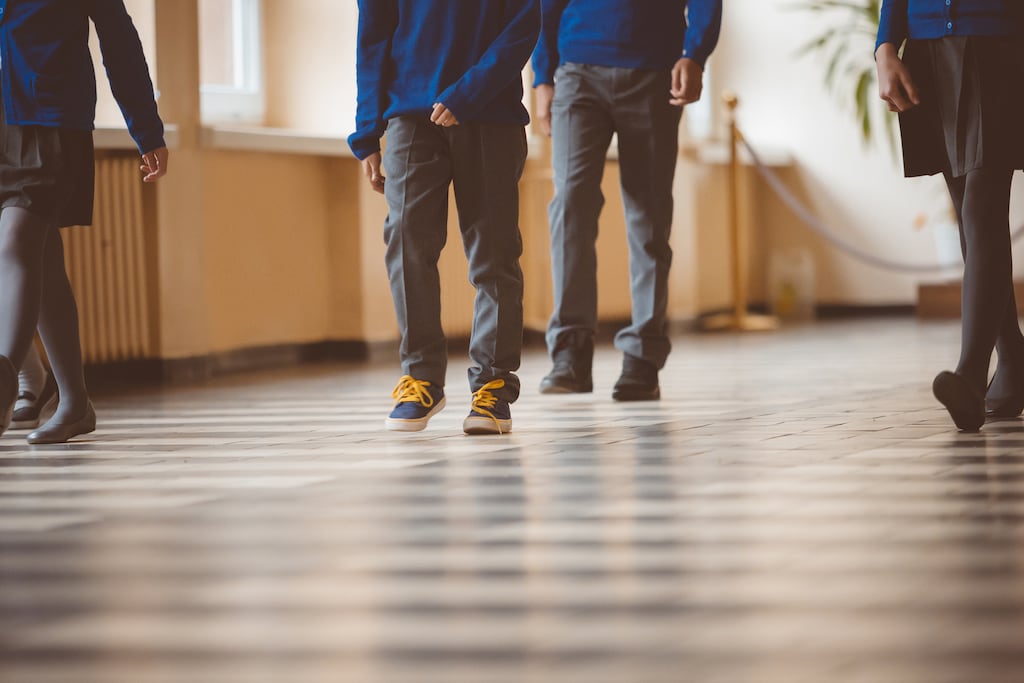“The young man who was in that video. I really feel for him.” So said the Taoiseach last week, referring to a notorious assault in Navan. He also said that “it seems to me that a young man was targeted, essentially because he was different.”
One news report on the incident said that “the young man was only yards away from a family member’s house to where he tried to crawl to safety as blows rained down on him by a group of teenagers from the same school.” Another said that “the young man injured in the incident attended Our Lady of Lourdes Hospital, Drogheda where he received treatment for facial injuries”.
TikTok, advertising the video of the assault, from the sharing of which it was making revenue – at the time I checked it had 817,300 views, before it was removed – classified it as “Attack on young man in Navan”.
Local councillor Nick Killian told the media: “That young man could have been seriously hurt and seriously injured”. Ryan Tubridy on his RTÉ radio show spoke of it as “The incident with the young man, poor young lad ... it’s horrible.”
READ MORE
The thing is, though, no young man was assaulted in that incident in Navan. A child was.
The victim is 14 years old. A 14 year-old is not a man, young or otherwise.
I don’t want to suggest for a moment that there was anything deliberately unfeeling in this choice of words. Everybody who commented was clearly genuinely upset and angry.
Leo Varadkar’s comments on the incident were otherwise particularly sensitive and well chosen. It’s this that makes the multiple references to a “young man” all the more unsettling.
For whatever the intention, calling the victim a “young man” has the effect of minimising the violence. And, more subtly, of minimising the culpability of the social media companies that allowed the video of the assault to be shared for entertainment.
Just switch the language of TikTok’s classification to what it should be: “Attack on child in Navan”. Would that not make the idea of sharing that video much more obviously creepy?
Or is it that referring to children subjected to extreme bullying by their peers as men and women helps us to keep at bay the knowledge that our children inflict violence on other children all the time?
In 2018, Unicef, the United Nations Children’s Fund, reported nearly half of Irish teenagers (44 per cent) as saying they experienced peer violence at school. Some 28 per cent of Irish pupils aged 13 to 15 – which is to say, by any definition, children – said they had been bullied at school at least once in the past couple of months, with 27 per cent saying they had been involved in a physical fight at least once in the past year.
Unicef put it bluntly: peer violence is “a pervasive part of young people’s education in Ireland”. Not all the violence is physical: girls in particular both inflict and suffer a great deal of psychological hurt on schoolmates.
It may not be that there is more violence in schools, but that it has largely shifted from being implicit to being explicit, from tacit threat to open enforcement.
Another study of 778 lesbian, gay, bisexual and trans pupils in schools across Ireland, conducted for BeLonG To Youth Services, found three-quarters of them feeling unsafe at school. These students had learned to avoid certain spaces and activities in their schools: 37 per cent stayed away from PE; 34 per cent did not use the toilets; 24 per cent avoided locker rooms; and 18 per cent even stayed away from the lunch area.
Intertwined with the psychological violence of constant hostile remarks, 11 per cent of these kids had experienced assaults ranging from “being violently kicked and punched to being thrown down the stairs at school”.
One thing to wonder about with all of this is whether it is getting worse. No firm answer is possible because there are no studies of what bullying of children by other children used to be like.
My guess, for what it is worth, is that it is indeed getting worse. I went to working class all-boys schools in Dublin – and while a degree of violence was always present among the boys, it was nothing like as pervasive as these recent figures suggest it to be now.
There is at least one obvious reason as to why this should be so: the school environment is now what military planners call target-rich.
It is not, of course, that there were no kids who were LGBTQ+. There were plenty of them.
But they were silent and invisible. Even if they had the language to describe their sexual identities, children would simply have been too scared to utter it.
[ How do I spot if my child is . . . being bullied?Opens in new window ]
It may be not so much that there is more violence in schools but that it has largely shifted from being implicit to being explicit, from tacit threat to open enforcement. More violence is a product of more openness. But that is hardly much of a consolation. And it raises very large questions of social responsibility.
As a society, we have (rightly) encouraged kids to be more open about who they are. But we have not kept the other side of that bargain, which is to protect them when they come out. Kids have become unguarded in both senses.
















